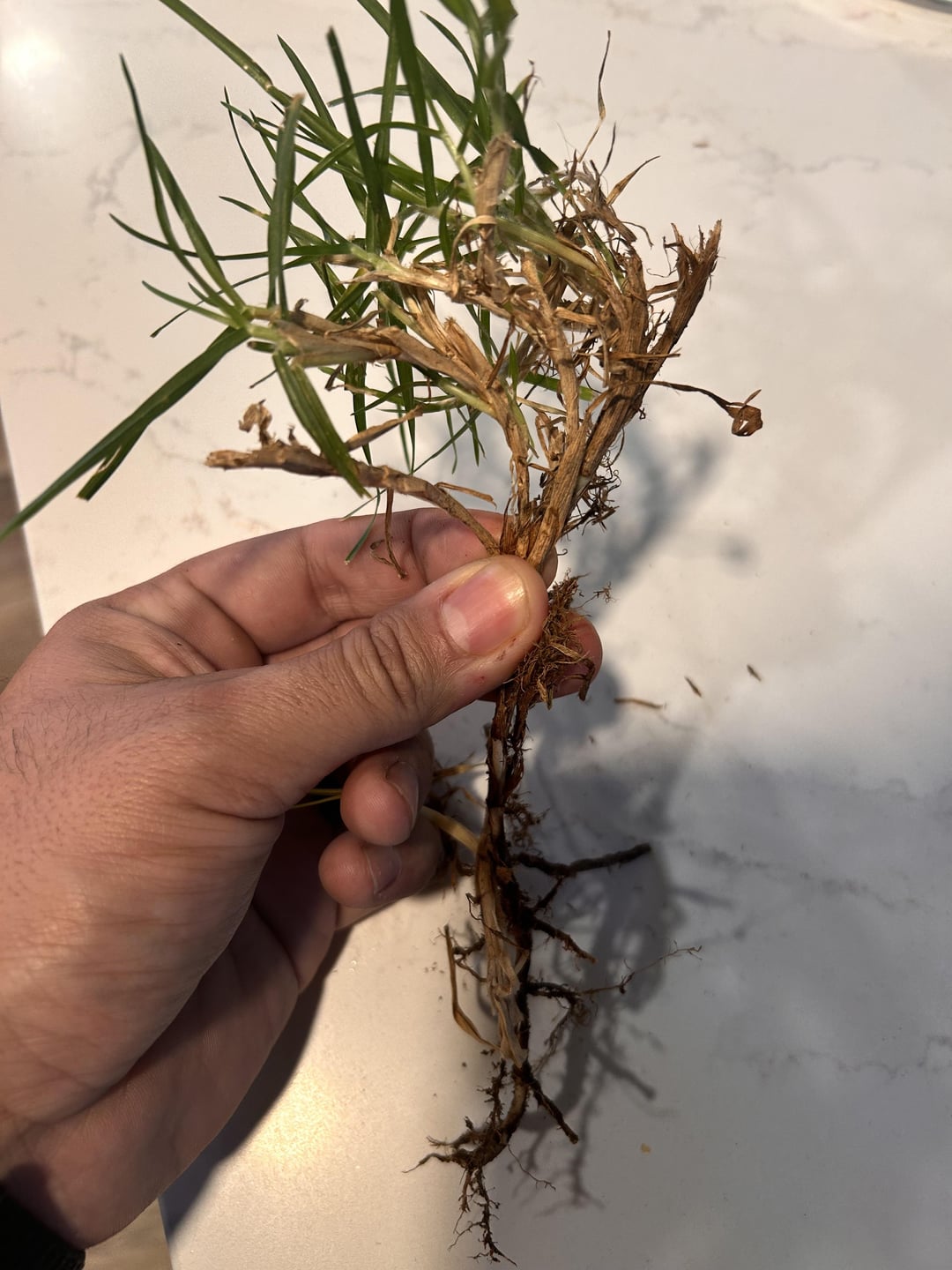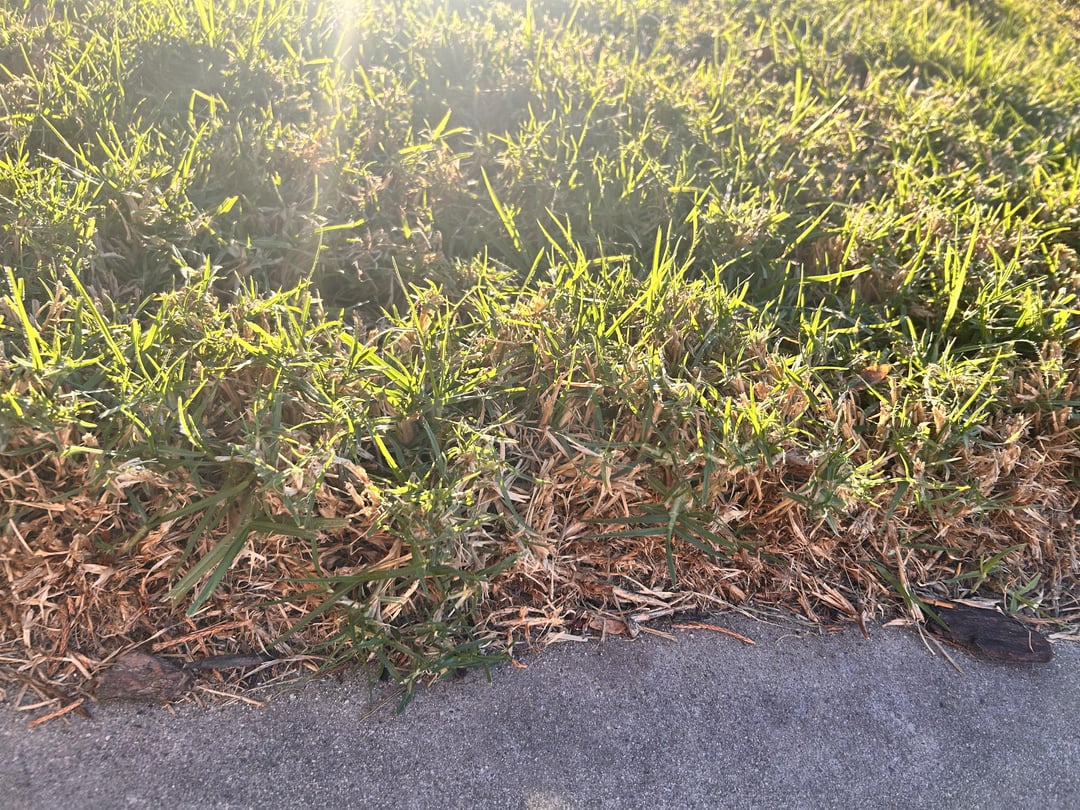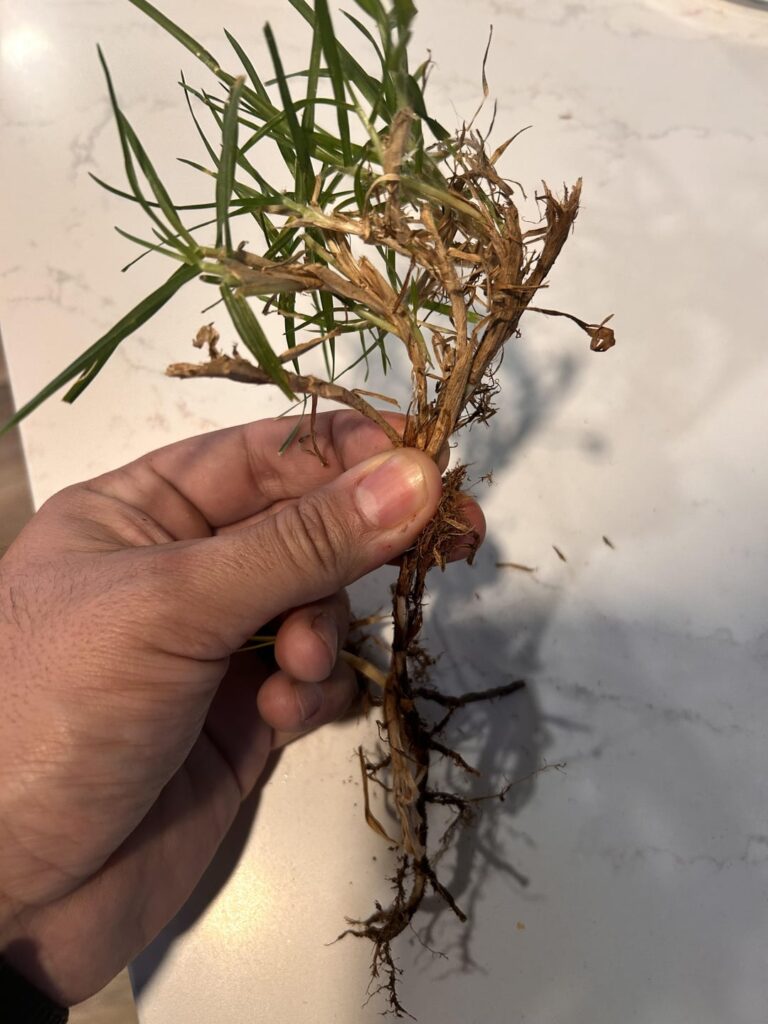




Was wondering if anyone could help identifying this type grass. House I moved into had several types of grass (Bermuda, fescue). This grass seems to have its own section, stays green year round, bunch of thatch, and thick, seems to grow faster during the cold. I’m in a transition zone in CA. Weather is between 34-85ish degrees. Thanks
by ComputerSea7589


6 Comments
Dethatching is a recent trend in lawn care that’s become more common thanks to youtube creators and other non-academic sources. As such, there’s a widespread misunderstanding/misinformation about the topic. This automatic comment has been created in the hopes of correcting some of those falsehoods.
Thatch is the layer of stems and roots, both living and dead, that makes up the top layer of soil. Grass clippings are not thatch and do not contribute to thatch. The thickness of thatch can only be assessed by digging into the soil.
Some thatch is good. While some academic sources say that under 1 inch of thatch is beneficial, most settle for half an inch. Thatch is beneficial for many reasons (weed prevention, traffic tolerance, insulation against high temps and moisture loss, etc) and should not be removed. Over half an inch of thatch may not warrant removal, but the underlying causes should be addressed. An inch or more of thatch SHOULD be addressed. Dethatching as a regular maintenance task, and not to address an actual thatch problem, is NOT beneficial… Again, some thatch is good.
Thatch problems are not typical. Excessive thatch is a symptom of other issues, such as: over-fertilization, overwatering, regular use of fungicides, excessive use of certain insecticides, high/low pH, and the presence of certain grasses (particularly weedy grasses).
Dethatching with a flexible tine dethatcher (like a sunjoe) causes considerable short-term and long-term injury to lawns, and is known to encourage the spread of some grassy weeds like bentgrass and poa trivialis. In some RARE cases, that level of destruction may be warranted… But it should always be accompanied with seeding.
A far less damaging alternative to dealing with excessive thatch is core aeration. Core aeration doesn’t remove a significant amount of thatch, and therefore doesn’t remove a significant amount of healthy grass. BUT it can greatly speed up the natural decomposition of thatch.
Verticutters and scarifiers are also less damaging than flexible tine dethatchers.
For the purposes of overseeding, some less destructive alternatives would be slit seeding, scarifying, manual raking, or a tool like a Garden Weasel. Be sure to check out the seeding guide [here.](https://www.reddit.com/r/lawncare/s/pUsKCxyvwQ)
Additionally, be sure to check the list of causes above to be sure you aren’t guilty of those.
*I am a bot, and this action was performed automatically. Please [contact the moderators of this subreddit](/message/compose/?to=/r/lawncare) if you have any questions or concerns.*
Weed
That appears to be kikuyu (pronounced kuh-KOO-yuh). It’s an easy African turf grass that was planted in southern California in the 70s and 80s for its drought tolerance and resistance to disease, pests, and chemicals. It is extremely invasive and will create thick, dense mats if you don’t consistently mow it short with a reel-type mower. It will also creep into, over, and through everything, so you have to maintain it quite regularly to keep it looking nice.
I would not mind seeding the rest of the lawn with this grass. It looks great most of the time
Isn’t that nutsedge?
Looks like Bermuda to me